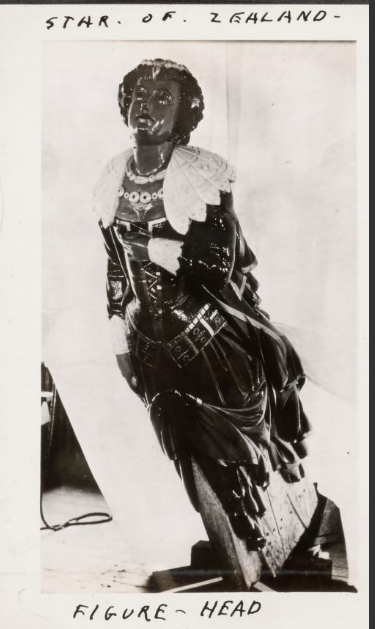-
Posts
3,046 -
Joined
-
Last visited
Content Type
Profiles
Forums
Gallery
Events
Everything posted by bruce d
-
Hello George, welcome to MSW. Perhaps you already know this but the Tyne and Wear Archives ... https://twarchives.org.uk/ ... hold a collection of photographs of torpedo boats etc and may be able to help. Even if Violet s not among the photos you may see her contemporaries. Ignore their website search function, it doesn't seem to look at the photo collections so I am afraid you will need to contact them for access terms. Also, in case you do not already have this, Violet was involved in a collision with the drifter 'Angelina' 22 September 1918. The records of this accident are held at the United Kingdom Hydrographic Office (UKHO) Archive ... https://www.gov.uk/guidance/the-ukho-archive ... under the file reference HD/1918/3710. Again, do not rely on the site search facility, I suggest contacting them and qouting the file number to see if it contains photographs or reports of potential use. HTH, Bruce
-
Hello Mark and a belated Welcome to MSW!
-
-
Hello John, welcome to MSW. Hope to see a build log for your Jolie Brise, it is a good subject with a long history and still afloat. Why not post a few words in the New Members Introduction thread? Bruce
- 22 replies
-
- jolie brise
- artesania latina
-
(and 1 more)
Tagged with:
-
"The uses and conveniences of different kinds of Water Craft" Continental Army Vessels on Inland Waterways, 1775-1782 by John U. Rees, 2001 The_uses_and_conveniences_of_different.pdf EDIT: so there is no confusion, the status of this document is Open Access although it is not plainly stated in the text. The source is acemia.edu and this statement is on their home page: "Open Access Academia’s goal is to ensure that every paper, ever written, is on the internet, available for free. 22 million papers have been uploaded to Academia.edu. We think there are ~100 million papers ever written, so we are ~22% of the way there." Thanks go to Kurt for highlighting the lack of this information in the post. Wouldn't want it any other way.
-
Hello Sandra, A warm welcome to MSW from Sussez. This is a great place for advice and assistance. Please keep us posted on your project. Regards, Bruce
-
Hello Antony, a warm welcome to MSW from Sussex. Your path to get here has a lot in common with many people here, glad to have you aboard. Looking forward to your build log. Cheers, Bruce
-
Hello Mart,and a warm welcome to MSW from the UK.
-
Kevin, great video (as usual) but I suggest you listen to Alan: I over-puckered when watching.
- 1,132 replies
-
Hello Chuck, welcome to MSW.
-
A bit late but hello, and welcome to MSW!
-
Hello Sascha, welcome to MSW!
-
Hello Nick, welcome to MSW!
-
Hello, welcome to MSW!
-
Hello Chris, welcome to MSW!
-
Hello, welcome to MSW!
-
That was common practice, a pin or wedge was (I think) also used to 'cinch up' the assembly. The west was a big wide place and not all blacksmiths went to the same school. Many of them were immigrants or second generation Americans and were still doing things like they had been done in whatever country they learned. It took the arrival of the railroads to make the idea of a 'standard' part make sense. These stage coaches were pretty much alike in looks but could have any number of small differences in fittings or repairs. Careful, I might get on my soapbox 🤐
About us
Modelshipworld - Advancing Ship Modeling through Research
SSL Secured
Your security is important for us so this Website is SSL-Secured
NRG Mailing Address
Nautical Research Guild
237 South Lincoln Street
Westmont IL, 60559-1917
Model Ship World ® and the MSW logo are Registered Trademarks, and belong to the Nautical Research Guild (United States Patent and Trademark Office: No. 6,929,264 & No. 6,929,274, registered Dec. 20, 2022)
Helpful Links
About the NRG
If you enjoy building ship models that are historically accurate as well as beautiful, then The Nautical Research Guild (NRG) is just right for you.
The Guild is a non-profit educational organization whose mission is to “Advance Ship Modeling Through Research”. We provide support to our members in their efforts to raise the quality of their model ships.
The Nautical Research Guild has published our world-renowned quarterly magazine, The Nautical Research Journal, since 1955. The pages of the Journal are full of articles by accomplished ship modelers who show you how they create those exquisite details on their models, and by maritime historians who show you the correct details to build. The Journal is available in both print and digital editions. Go to the NRG web site (www.thenrg.org) to download a complimentary digital copy of the Journal. The NRG also publishes plan sets, books and compilations of back issues of the Journal and the former Ships in Scale and Model Ship Builder magazines.




